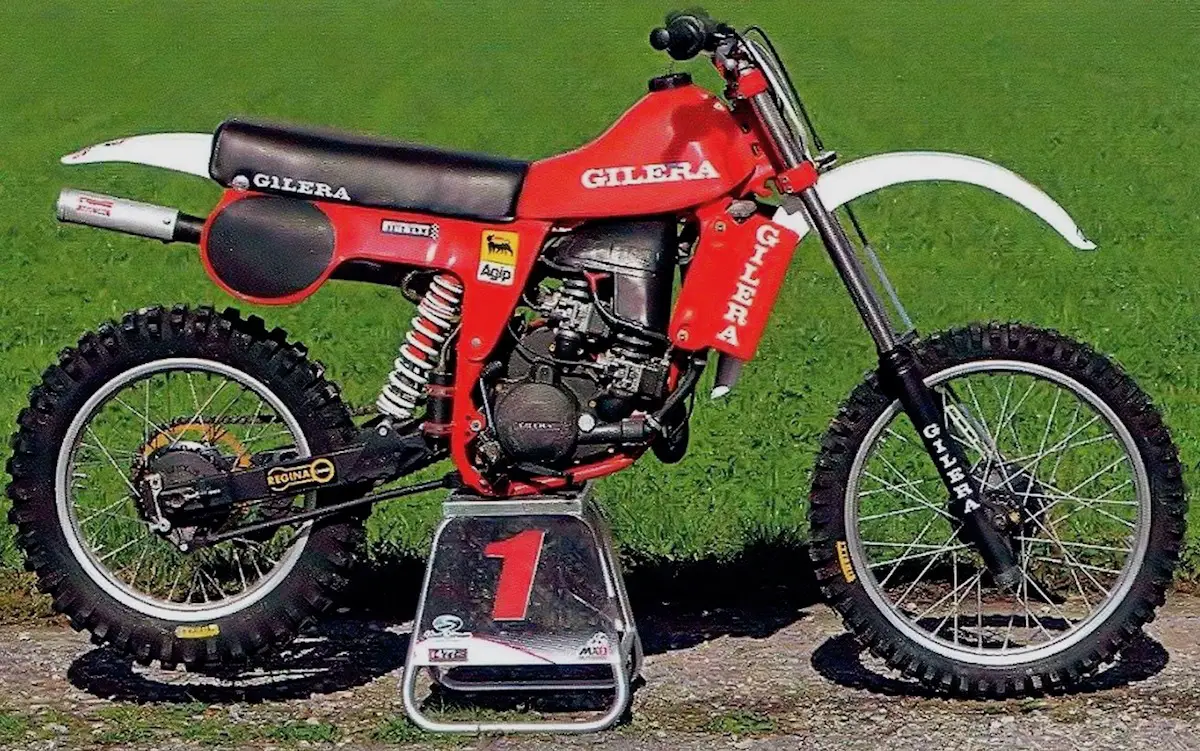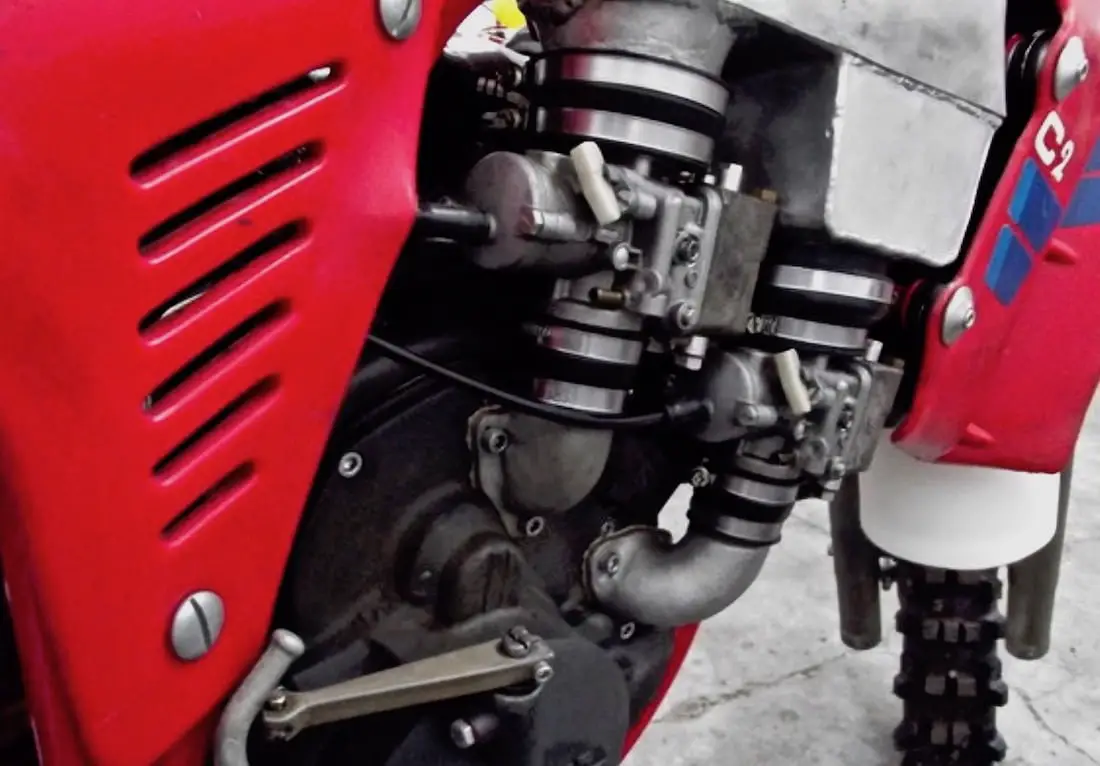FORGOTTEN MOTOCROSS TECH: 1980 GILERA B 125 BICILINDRICA
 The 1980 Gilera Bicilindrica was brilliant engineering, but from a performance point of view it lacked both torque and reliability. If Gilera had been able to use the rumored 1981 twingle configuration, it might have been easier to ride.
The 1980 Gilera Bicilindrica was brilliant engineering, but from a performance point of view it lacked both torque and reliability. If Gilera had been able to use the rumored 1981 twingle configuration, it might have been easier to ride.
Motocross history is filled with examples of creative ideas that were heralded as groundbreaking, but, because of the rapid rate of change in development, sank into the swamp of forgotten technology. Although some ideas are best left abandoned, others were truly innovative (if not ultimately successful). MXA loves to reveal motocross’ tech trivia. Do you remember this idea? The Gilera B 125 Bicilindrica two-stroke.
 From a distance the Gilera B 125 Bicilindrica looks very much like the single-cylinder Gilera, but up close it assaults your eyes.
From a distance the Gilera B 125 Bicilindrica looks very much like the single-cylinder Gilera, but up close it assaults your eyes.
 Dutch designer Jan Witteveen and the 1980 Gilera B 125 twin-cylinder motocross bike he engineered.
Dutch designer Jan Witteveen and the 1980 Gilera B 125 twin-cylinder motocross bike he engineered.
In January 1978, Jan Witteveen took over the technical direction of the Gilera Racing Department. Jan Witteveen was a genius and is most famous for the twin-cylinder 1980 Gilera B 125 two-stroke. Witteveen’s engine had two cylinders parallel to each other but inclined forward at 50 degrees. The cylinder lowest on the cases had a front exhaust port, while the upper one had a rear exhaust port. The heads had a hemispherical combustion chamber and squish crown. The rotary engine’s two rotating steel discs were 105mm in diameter. The engine’s water pump had a magnesium body, plastic impeller and aluminum shaft. The two aluminum silencers were built by Motomeccanica Rino di Vigasio (VR) and had different lengths, plus the pipes had different-diameter expansion cones. The engine used two Motoplat ignitions. The twin only weighed 8 pounds more than Gilera’s single-cylinder version.

It is hard enough to get one carb mounted on a rotary valve engine, but Witteveen manage to get both carbs to align with the crankshafts. Don’t confuse this design with the twin-carb Puch MC250. The Puch was a single-cylinder bikes with one rotary valve carb and one piston port carb feeding the same cylinder.
The 125cc, two-stroke, twin-cylinder, two-carb, rotary-valve engine was an earth-shattering design, but it was fragile. The Gilera mechanics suffered crankshaft and frame failures, along with other teething issues. The bike rarely finished. Italian GP racer Franco Perfini was leading the Yugoslavian 125 GP when the frame broke on the last lap of the second moto. The B 125’s best finish was a fourth place in the 1980 German 125 GP. Jan Witteveen planned to change the firing order for the 1981 season to a “twingle,” where both pistons go up and down in unison. The Gilera B 125 Bicilindrica never raced again because the FIM banned it for 1981.





Comments are closed.